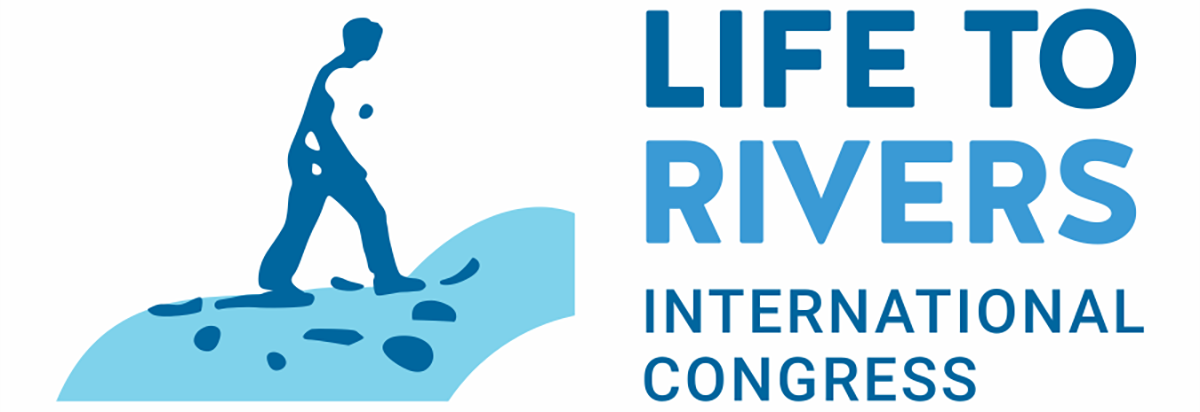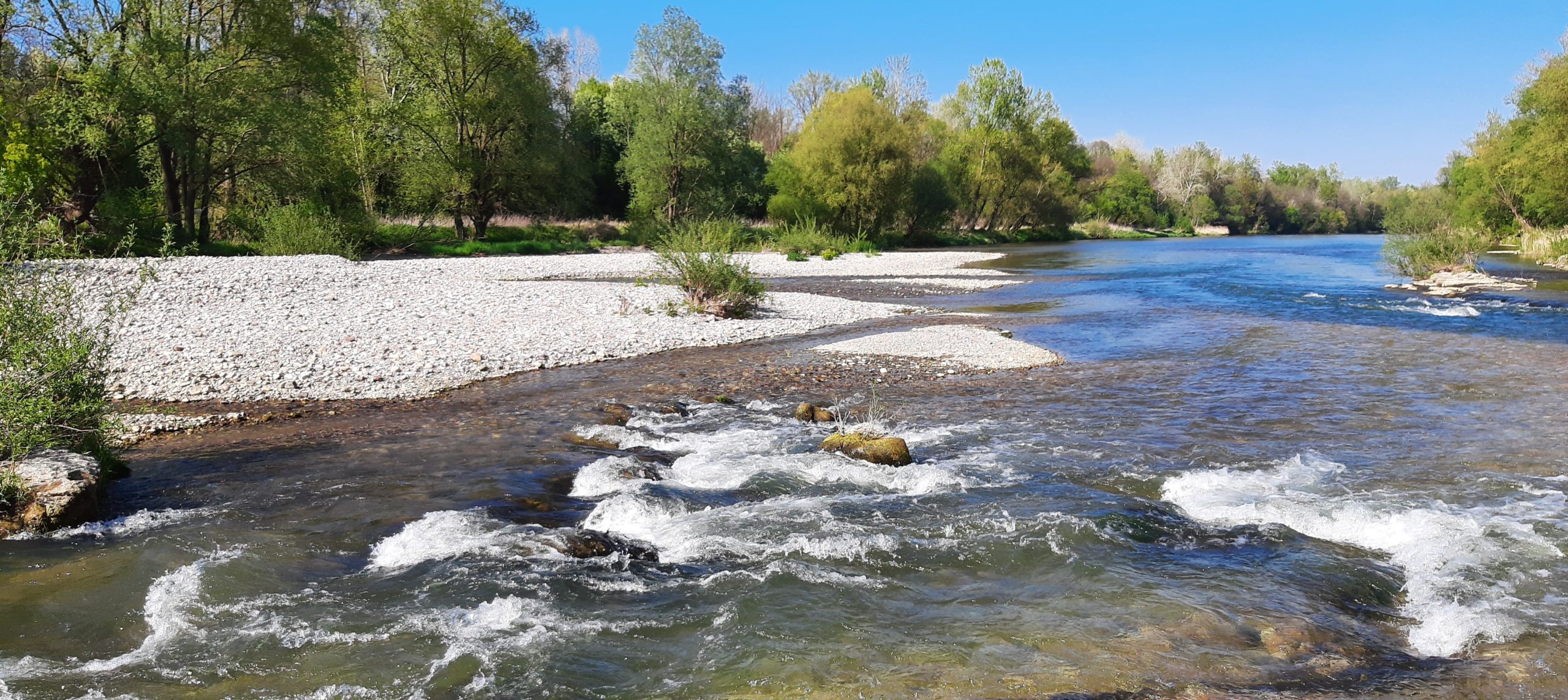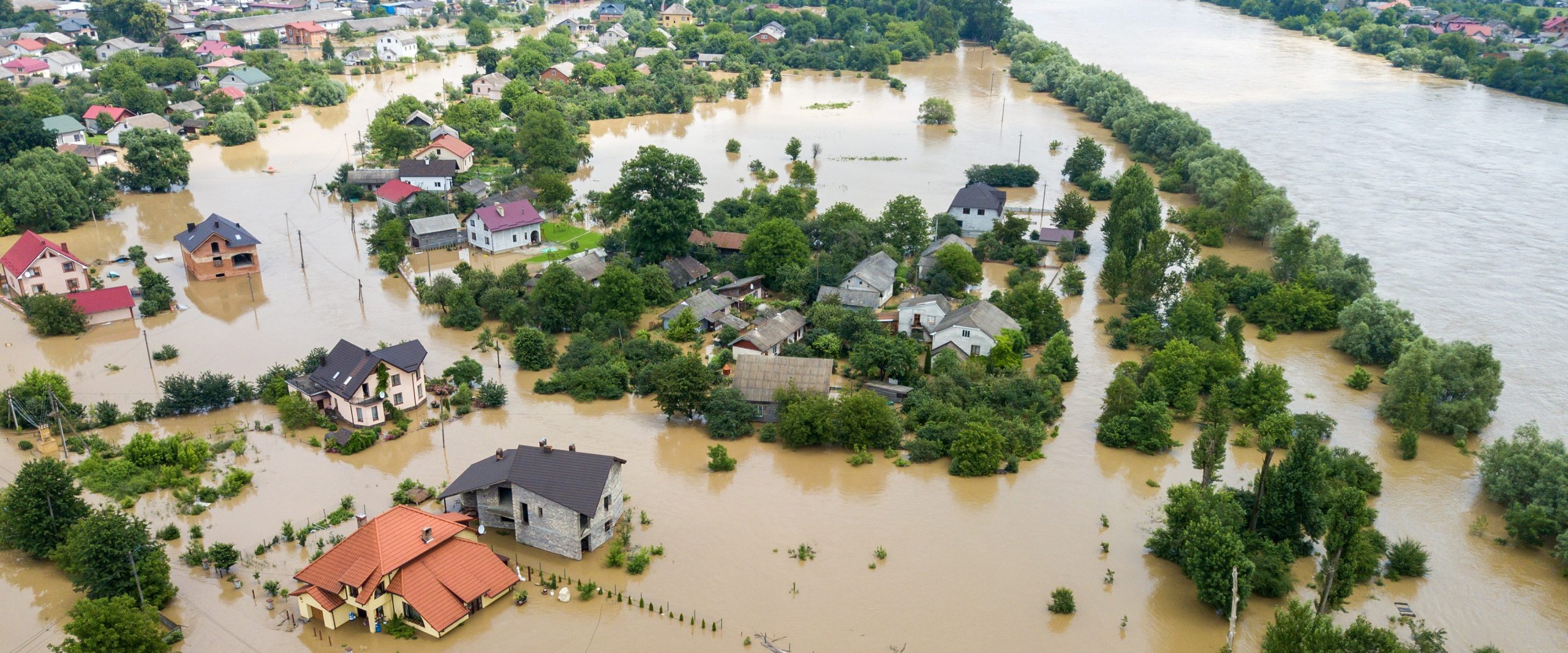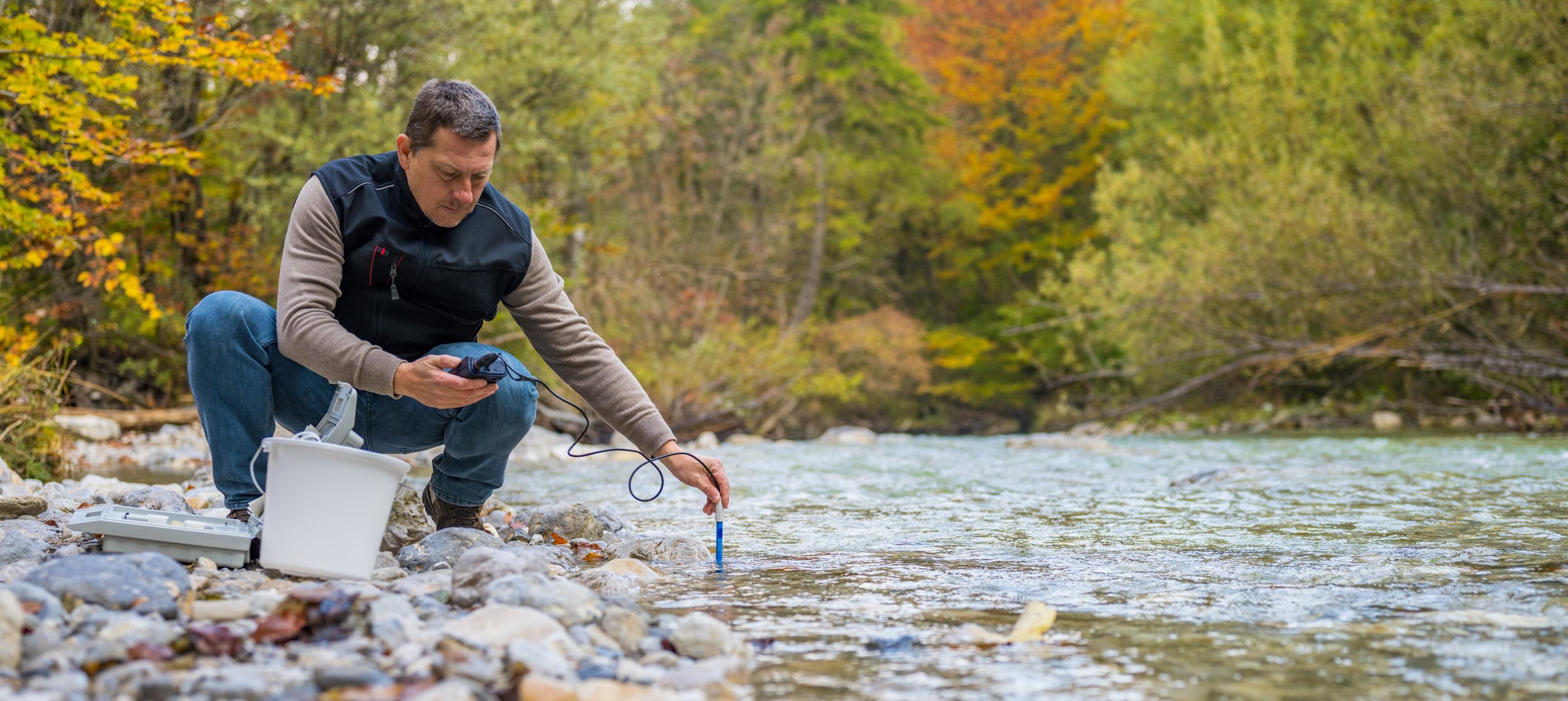


The International congress »Life to rivers« will be devoted to identifying solutions for the conservation and restoration of rivers in the context of climatic, social, and environmental change. Particular attention will be given to recent advances in river restoration, the implementation of nature-based solutions (NbS), and the formulation of contemporary policies that shape future development.
Experts, researchers, policymakers, and all who care about the future of rivers are warmly invited!
Congress objectives:
Participants will receive the conference proceedings and have the opportunity to hear distinguished speakers present the latest findings and practical experiences. The event will also provide a platform for the exchange of knowledge and best practices, learning through interactive workshops, and relaxed informal socializing.
Participation in the congress is free of charge.
By registering, you secure a place at the congress and the opportunity to participate with an authored contribution. Participation with an authored contribution is encouraged but not mandatory. You can present your work at the congress in the form of a poster, a short presentation, or a case study in one of the workshops. All authored contributions, regardless of the presentation format at the congress, will be published as short articles in the congress proceedings, which will be issued before the event.
Instructions for participating with an authored contribution are available on the registration page.

foto: Luka Božič
Restoration of river ecosystems is an evolving discipline that continuously introduces new approaches and techniques. Recently, so-called functional river restoration has been gaining increasing importance. This approach does not focus on the direct restoration of river morphology, but rather aims to create conditions that allow natural river processes to occur. These processes then shape the natural river dynamics in space and time.
Contributions presenting new insights into river processes and their restoration, case studies of successful river restoration, identification of the economic, social, and environmental benefits of river restoration, and discussions on barriers and opportunities for their removal.
Research and evaluation of completed river restoration projects have shown that the extent and value of ecosystem services provided by rivers increase proportionally with their naturally functioning dynamics. In other words, the more a restoration supports natural river processes, the greater the benefits provided by the rivers. Often, simply restoring river geomorphology and maintaining it does not achieve the desired results and is also financially very demanding. Therefore, approaches are increasingly being adopted that do not attempt to artificially create or shape river structures (such as banks, riffles, etc.), but instead focus on establishing conditions in which these structures can form naturally—through dynamic, natural river processes. The foundation of this approach is providing space for rivers, which is most effectively achieved through co-creative stewardship, as promoted in the LIFE2RIVERS project.
As this is a relatively new approach, it does not yet have a standardized name. In the professional literature, terms such as stage zero and process-based restoration are used.
The condition of a river and its floodplain, referred to as stage zero is defined in the Stream Evolution Model (SEM) as the state of a river that has remained free from human interventions long enough for natural processes—consistent with the characteristics of the catchment—to shape its characteristic cross-sections, planform pattern, longitudinal profile, and typical flow, sedimentological, and ecological processes. Such a “restored” river is distinguished by an exceptional diversity of hydromorphological features, high flow complexity, and full connectivity with its floodplain and groundwater—similar to natural rivers.

Nature-based solutions (NbS) are actions to protect, sustainably manage, and restore natural and modified ecosystems that address societal challenges effectively and adaptively, simultaneously benefiting people and nature. This is the widely recognized definition of NbS, adopted in 2016 by the International Union for Conservation of Nature (IUCN). As the NbS (Nature-based Solutions) concept increasingly enters policy and measures are implemented on the ground, there is a growing need for guidelines to ensure proper understanding, development guidance, and appropriate implementation of NbS. To provide a unified framework, IUCN published a global standard for NbS in 2020, along with guidelines for its application. The NbS concept encompasses a wide range of approaches, among which river ecosystem restoration holds an important place.
Presentations of river ecosystem restoration case studies with results of assessment against the NbS standard, where it is mandatory to present the assessment based on Criterion 1 – NbS effectively address societal challenges, and Criterion 3 – NbS result in a net gain to biodiversity and ecosystem integrity. Presentation of assessments according to the other standard criteria is encouraged but not mandatory. Cases may be presented at various stages of development or implementation – from conceptual designs to final implementation with already measured outcomes.
The primary goal of river ecosystem restoration is to re-establish or improve the functioning of natural hydromorphological and ecological processes that have been degraded by human impacts, with the aim of enhancing ecosystem integrity and biodiversity. River ecosystem restoration can be considered a Nature-based Solution (NbS) only when it also represents the most appropriate response to one or more societal challenges related to degraded rivers—for example, flood risk, exposure to droughts, poor quality or scarcity of drinking water, public health issues due to pollution, and the inaccessibility or unattractiveness of river spaces for people.
Nature-based solutions criteria:
Compliance of a measure with the standard is assessed based on 28 indicators, which further define the individual criteria. To support the compliance assessment, IUCN has developed a self-assessment tool that includes detailed descriptions of the indicators, a scoring scale, and a graphical representation of the measure’s alignment with the standard. The NbS standard is considered fulfilled when all criteria are adequately met. The tool is not intended solely for assessing a measure’s compliance with the NbS standard, but also for familiarizing stakeholders with available resources and verification methods, as well as identifying opportunities to improve the measure in order to achieve the highest possible compliance with the standard.
From the submitted contributions, we will select up to three cases, which will be collectively evaluated in a workshop using the NbS self-assessment tool under the guidance of certified NbS assessors. Authors of the selected contributions will be required to provide and publicly share detailed information about these cases.

The formulation of a policy or legislative act ideally follows the existing body of knowledge, values, and goals established or represented by society as a whole. Therefore, scientific insights and shared values upheld by a local or national community provide the best and most effective foundation for long-term, sustainable, and efficient policies and legislation.
In this interactive session, we will explore which data and scientific insights, and to what degree of reliability, are needed for improved river basin management and river ecosystem restoration. The focus will be on the necessity of an interdisciplinary approach, showcasing good practices, and linking to existing policies, policymakers’ needs, and the effectiveness of their measures. Special attention will be given to public and expert participation, as well as the oversight of policy and legislation implementation in practice.
Contributions in the field of environmental policy and regulation, water management, and nature conservation, addressing:
The development of strategic documents and regulations at the national or regional level is usually a lengthy and complex process, in which it is easy to lose sight of the initial goals set by society. In a modern democratic society, this process is constantly influenced by diverse, including particular, interests that do not necessarily align with societal consensus or the common public good. Therefore, it is essential that decision-makers and legislators can rely on high-quality information and a well-formed societal consensus when formulating and adopting policies and regulations.
Consequently, the involvement of experts and the general public’s trust in scientific data, findings, and professionals are crucial for adopting high-quality guidelines and binding rules that pursue the common good and societal consensus without the dominance of any single actor. In this context, we question whether the current legislative framework, in Slovenia or wider, ensures sufficient independence of experts for them to effectively pursue societal goals, and whether experts’ responsibility for their own findings and interventions in the field is secured through project quality or transferred to the political level. This issue is of particular interest in the context of environmental assessments, which are essential for the implementation of diverse projects and programs impacting the environment. The session will also address aspects of integrating and fostering cooperation among various disciplines in the field of water management, each of which contributes significantly to achieving shared societal objectives.
Another key factor in policy-making is effective public participation, which ensures the protection of public interests in interventions in aquatic environments and the formation of societal consensus in decisions about the future in which we want to live. It is important to understand that the public includes both civil society and its various forms of organization, as well as experts and professional associations. At the same time, private profit-driven organizations and interest groups should not be overlooked; however, processes must transparently distinguish particular private interests from public ones and establish compromises that do not primarily harm public benefits.
We will discuss these topics through the lens of decision-makers’ needs in policy and regulation development, as well as the effective implementation of water, nature conservation, and broader environmental legislation. In doing so, we will also examine examples of regulations and evaluate their quality, as well as the involvement of experts and the public in their formulation.
Thematic session is in preparation.
dr. Nataša Mori, National institute of biology (coordinator)
dr. Urška Koce, DOPPS – BirdLife Slovenia
dr. Andrej Lukšič, Institute of ecology
dr. Polona Pengal, Inštitut REVIVO
mag. prav. Aljoša Petek, PIC – Legal Center for the Protection of Human Rights and the Environment
dr. Barbara Belletti, CNRS-EVS lab, University Jean Monnet Saint-Etienne, France
dr. Barbara Beznec, Inštitut za ekologijo
prof. dr. Mihael Brenčič, Naravoslovnotehniška fakulteta, Univerza v Ljubljani
izr. prof. dr. Barbara Čenčur Curk, Naravoslovnotehniška fakulteta, Univerza v Ljubljani
Silvia Consiglio, PROVINCIA AUTONOMA DI TRENTO, Servizio Bacini montani
dr. Luka Đekić, Inštitut za ekologijo
doc. dr. Damijan Denac, Zavod Republike Slovenije za varstvo narave
prof. dr. Michael Doering, Zurich University of Applied Sciences – ZHAW
doc. dr. Tina Eleršek, Nacionalni inštitut za biologijo
prof. dr. Patrick Fink, Institute for Zoology, University of Koeln
doc. dr. Pavel Gantar, Slovensko društvo za zaščito voda
dr. Jože Ileršič, Ministrstvo za kmetijstvo, gozdarstvo in prehrano
mag. Smiljan Juvan, Vodnogospodarski biro Maribor d.o.o.
dr. Urška Koce, Društvo za opazovanje in proučevanje ptic Slovenije
mag. Igor Kopše, Zavod za gozdove Slovenije
Tanja Košar, Zavod Republike Slovenije za varstvo narave, OE Celje
doc. dr. Maša Kovič Dine, Pravna fakulteta, Univerza v Ljubljani
Miha Kračun, Vodnogospodarski biro Maribor d.o.o.
Fabien Kufel, The International Union for Conservation of Nature
izr. prof. dr. Andrej Lukšič, Inštitut za ekologijo
Tijana Mičič, Vodnogospodarski biro Maribor d.o.o.
dr. Nataša Mori, Nacionalni inštitut za biologijo
assoc. prof. dr. Jennie Olofsson, Mid Sweden University
dr. Polona Pengal, Inštitut za ihtiološke in ekološke raziskave, zavod REVIVO
mag. prav. Aljoša Petek, Pravni center za varstvo človekovih pravic in okolja
Petra Repnik, Direkcija Republike Slovenije za vode
Boštjan Rozman, Vodnogospodarski biro Maribor d.o.o.
izr. prof. dr. Simon Rusjan, Fakulteta za gradbeništvo in geodezijo, Univerza v Ljubljani
mag. Senka Šifkovič, Umanotera, Slovenska fundacija za trajnostni razvoj
Benoit Terrier, Agence de l’eau Rhône Méditerranée Corse, Lyon
zasl. prof. dr. Mihael J. Toman, Slovensko društvo za zaščito voda
doc. dr. Al Vrezec, Nacionalni inštitut za biologijo
assoc. prof. dr. Gabrielle Weigelhofer, Universität für Bodenkultur Wien; Institut für Hydrobiologie und Gewässermanagement
Martin Wenk, Federal Ministry of Agriculture and Forestry, Climate- and Environmental Protection, Regions and Water Management (BMLUK)
Gašper Zupančič, Društvo vodarjev Slovenije
dr. Miroslav Žaberl, Ribiška zveza Slovenije
NOVICE
No connected news yet.